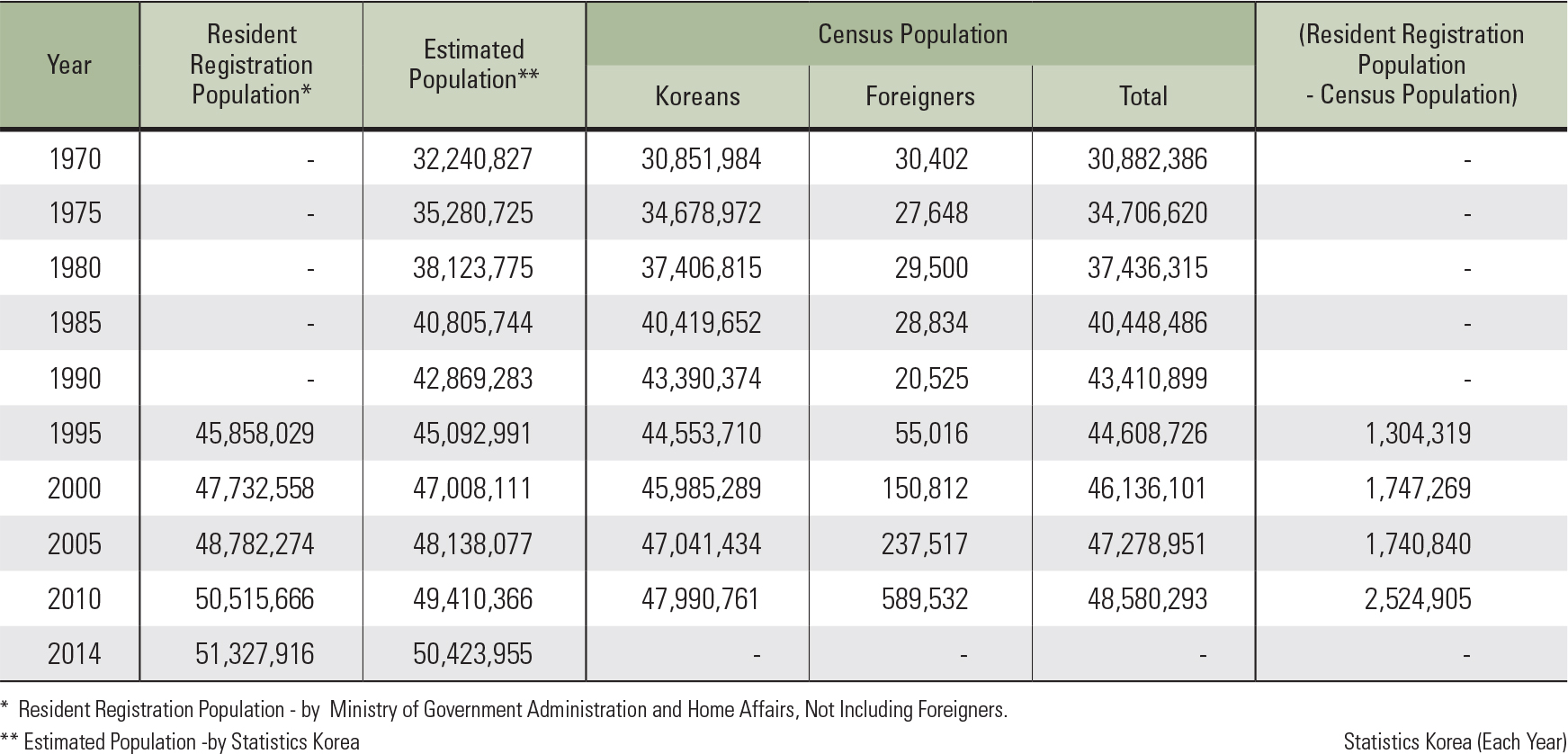English III
The majority of the Korean population lives in urban areas. As of 2010, there were many neigh- borhoods in urban areas with population densi- ties exceeding 10,000 persons/km², particularly in the Greater Seoul Metropolitan area regional metropolitan cities such as Busan, Daegu, and Gwangju. Depending on how population data are collect- ed, there are multiple population statistics such as resident registration population, estimated population, and the census population. The res- ident registration population uses the household registration data, and it is usually the largest of the three statistics. Frequently, an individual’s actual residence is different from the registered residence for a variety of reasons; to help address this issue, the population census is conducted every ve years. In between the of cial censuses, Statistics Korea (i.e., the Korean census bureau) publishes an estimated population every year to provide information between censuses. Since the population census cannot attain a 100% response rate, the resident registration population compris- es the highest total, followed by estimated popu- lation and census population.
page_2 |

